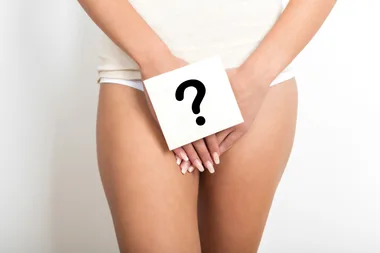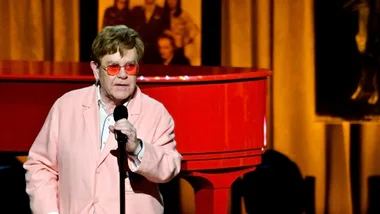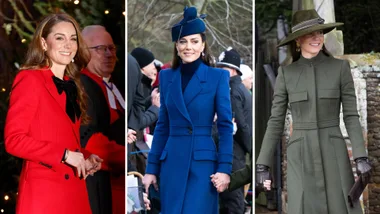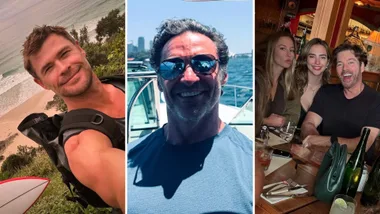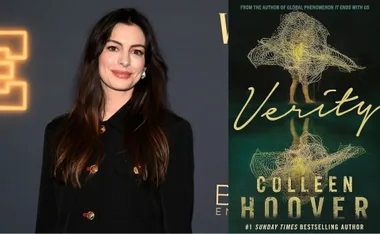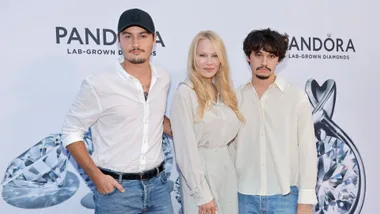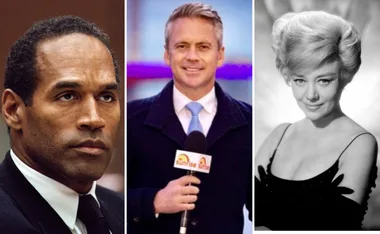EXCLUSIVE INTERVIEW WITH Audrey Niffenegger author of The Time Traveler’s Wife (RandomHouse $32.95), our Australian Women’s Weekly Great Read for December.
**Q Your book, The Time Traveler’s Wife is often described as a classic love story – do you agree with that?
A** I’m interested to see how people very much want to classify it….’it’s a love story!….it’s science fiction!’ But I think it’s definitely a love story. When I originally conceived the idea for the book I was deeply interested in writing about people who are frequently separated through no fault of their own and so in a way, it is essentially a book about longing. And it is quintessentially a love story but in many ways I am more interested in what keeps them apart than the marvellousness of them being together.
**Q What attracted you to the idea?
A** At the time I started writing which was 1997 I was suffering from an extraordinarily lousy love life, which lots of leisure to think about the book. The other main inspiration for the themes of waiting and longing can be found in the book’s dedication to my maternal grand parents. My grandfather died very suddenly when he was in his early forties. Of a brain tumour. One day he had a bad headache and three days later he was dead. My grandmother didn’t die till her 70’s and never remarried or dated. Raised her kids by herself. That’s a lot of life to have your husband has died. And she never talked about him much. My mother was sixteen .
**Q I felt like I knew Henry and Clare really well by the end of the book and thought that the device of jumping backwards and forwards in time meant that they were gradually revealed in bits and pieces ?
A** The book was not written in the order that it is read. I started off with the title and wrote the ending, then just started the middle and the beginning which was very difficult and it got revised a lot. It’s pretty difficult for me to judge the incremental process the reader would have experienced because I did it in a completely different order.
**Q Is that how you always write?
A** I often start with titles but this is the first novel I’ve written – all my other novels have been visual novels so ….
**Q By that you mean illustrated works?
A** They’re mainly pictures, imagine a silent film with sub titles that’s about how much text there is. Mostly pictures with about one sentence per picture. When I’m doing one of those I will story-board it like an animated film so it’s very easy for me to re-arrange them, you know…pick them up and move them. So these scenes I wrote I thought of them in a similar way- they were sort of like units that could be moved around.
At one point the whole thing was assembled in a completely different order and someone said to me you’re going to completely confuse every reader and you should follow Clare’s experience.
**Q Time travel is not a new device, yet you used it in a very original way?
A** To me the real insight, the real original part of the idea was to have Henry have a genetic disease. Genetics were in the news at the time I was writing this. They were racing to unscramble the human genome. So the subject was kind of in the air.
**Q You started writing the book in 1997 and squeezed it in when you could, writing in fits and starts?
A** I’d periodically go to an artist’s retreat and when I was there I could write 70-80 pages at a go, but in my regular life, it got written at nights and weekends or whenever I wasn’t teaching. It’s episodic quality is actually good because you can write one scene in an evening.
**Q Did you become obsessed with it and think about Clare and Henry a lot?
A** They did take over a bit, moments like when I was washing the dishes and drying them. But not so much when I was teaching because you have a group of people looking at you and you must concentrate and respond. Very few people read it while I was writing it, so it was kind of like my secret life. My secret fictional life.
**Q When did you finish it and finally send it to agents?
A** Late January 2002.
**Q You experienced a lot of rejection – about 20 agents knocked back your manuscript?
A** Yes, there may have even been more than that. I never bothered to count.
**Q Most people find that disheartening – did you keep on believing in your book?
A** In the art world, the same thing happens, you try get into galleries, into shows, and I have experienced enough success in the art world that I could not believe people would not want to read my book. It was kind of denial, you know…‘oh you people are all wrong…’ Kind of typical of me but eventually I found a very nice agent .
**Q I understand the publisher paid the highest advance ever for a book?
A** Yes, they have a mission to publish emerging authors and are definitely set on discovering new writers and publishing fiction that other people are not going to take a chance on. They’re usual modus operandi is to pay fairly tiny advances and spend the rest of the money promoting the book. What was really great this time is that they liked it so much they were willing to pay more for my book – there was an auction and they outbid a couple of very large publishers. I’m very relieved it’s paying off for them because otherwise I would have felt terrible.
**Q You must have been thrilled to see your book the subject of a heated auction?
A** Yes it was really nice especially because the memory of being rejected by a whole lot of agents was pretty fresh. It’s very interesting to see how everything works (in book publishing). Also, the nice thing about having an agent is that you don’t have to experience the rejection
**Q You’re on a publicity tour now?
A** Yes, I’m half way through and it’s funny because I have to go back to Chicago every week and teach.
**Q How do you feel about the way people are embracing your book?
A** It’s really kind of amazing because writing is such a private activity. I was essentially writing it with my friends in mind. Whenever you think about anybody reading it, you think about people you know. It is SOOO amazing to meet total strangers who have read the book and come up to me and ask questions about my Henry and Clare. It blows my mind to see those words come out of their mouth. ..yeah, just, amazement.
**Q What prompted you – apart from a louse love life – to finally write a book?
A** I always wanted to write a novel and this idea was not going to be easily represented in pictures. This is about time and unless I’m going to go and make a movie, I should probably really do it as a novel because still pictures were not going to cut it. You can’t really make people disappear from pictures. So that was part of it. I had this idea and it had gotten hold of me and this was the best way to do it.
I’ve been writing for a really long time, I’ve written short stories and I’d never show anyone. Once I started to work on it I realised that certain ideas sort of have juice – you can see that you can take them to some sort of limit and that it could actually be fun to test some larger ideal that could actually be a novel.
**Q Did you start off with confidence?
A** I’m not particularly plagued by insecurities because I basically write for my own amusement. I was starting to feel insecure when I got that rejection from agents. After a while I started to think that I was delusional. That was when I sent it to the small publisher because I knew they were willing to read un-agented stuff. That was how I happened to be sending it to a publisher and an agent at the same time.
**Q Were where you brought up?
A** I grew up around Chicago. I was born in Southaven Michigan, which was a little town. We moved away when I was two so I never lived there for long, but we used to go up there all the time to visit all my relatives. I grew up in …Illinois, which is a suburb just a little north of Chicago and went to a small Catholic grade school, and a public high school and for college, went to a school of the arts. From a pretty early age I wanted to be an artist. I had the kind of family where that’s acceptable. My mother was a quilter and fibre artist . My dad is an engineer. I had two sisters younger than me. One is a buyer at a clothing company and the other is at a college working as a technical engineer at a computer college.
**Q You don’t have children?
A** No, I’m not married although three days after I finished the book I went out on my first date with my marvellous boyfriend.
**Q His name and job?
A** Christopher and he’s a photographer
**Q Taxidermy is a hobby of yours?
A** Only small things, nothing big. I don’t have a very big house. If I had a bison’s head or something it would take up the living room. I collect small taxidermy. The biggest thing I have are two human skeletons. In an upstairs room. It’s very nice with a skylight so they’re hanging around up there. It keeps them out of trouble and keeps the inquisitors from noticing them.
**Q Why the interest in skeletons?
A** It’s partially the creepiness, but it’s also just the beauty, I really drawn to natural history and the museum which is in the book is sort of a formative experience. It is an amazing place, full of stuffed birds and there’s a polar bear. So I am kind of slowly turning my house into a natural museum (laughing). I’m also interested in Victorian art and décor and Victorian ideas.
**Q So no clean, bright lines for you then?
A** No, I’m not really a modernist, but it’s not covered in doilies
**Q . What kinds of small things do you have, stuffed?
A** I have a great point owl. I have a rat , a memento from a trip to New York. I have a cat skeleton, the remains of a small squirrel,
**Q You also have two beautiful cats – of the living kind?
A** I have two cats, Claudine and Muybridge and they really are beautiful. Muybridge is a big black cat and Claudine is a tuxedo cat. Black cat with whiter markings that look like she’s wearing a tuxedo. Got white mittens and white stockings and a white stomach.
**Q Do they prowl over the keyboard when you’re trying to write?
A** That’s what cats are for. They also tend to sit in my lap, especially in winter. Claudine in particular likes to type. If there are any typo’s in the book it’s her fault.
**Q I read you like creepy movies – what’s the one that’s scared you the most?
A** The movie that most creeped me out was a movie called The Piano Teacher, a fairly recent movie, a very respected French movie about this woman who was a piano teacher in this academy in Vienna and she’s extremely messed up. I found that out and out disturbing, but creepy in a nice way, I would say David Lynch.
**Q The movie rights to The Time Traveler’s Wife have been bought by Jennifer Aniston and Brad Pitt?
A** Yes, by their production company Plan B. They are the producers and as far as I know, Brad and Jennifer are planning to star. The screenplay is being written. I’m told that in 40 books that get optioned get made into movies, so we’ll see.
**Q Can you imagine them playing Henry and Clare – Henry has dark hair!
A** Well, as actors they’re supposed to be chameleons so, anything is possible. I saw Jennifer in The Good Girl and she was really good in it. I haven’t seen Friends as I don’t have TV.
**Q Why not?
A** Because it makes me very depressed. There’s such a lot of negativity on TV. And I’m sure there’s great things. People say ‘oh you should have seen this or that,’ but not watching it certainly frees up a ton of time. Here I am kind of biting the hand that feeds me because the Today show people were very nice.
**Q What star sign are you?
A** Gemini
**Q Give me three words that describe you?
A** Sceptical, reserved and…kind.
Newsletter conversion description. Get the latest in your inbox.

